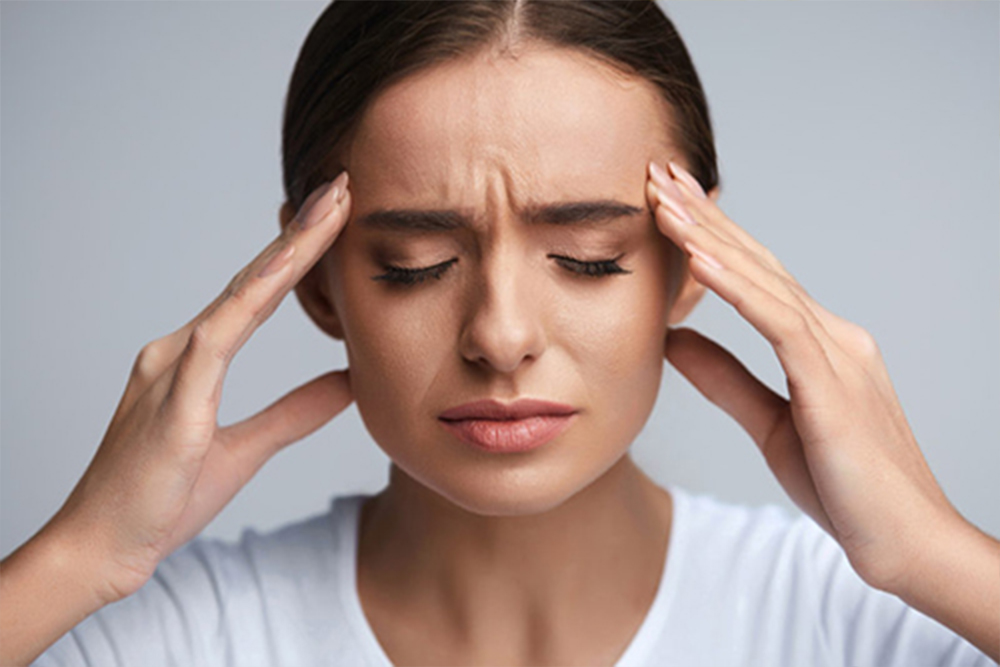We’d be hard-pressed to find a man who’s never had a headache. Headache is one of the most widespread health problems that we have to deal with from time to time.
Headache in numbers
That headaches are nothing special is evidenced by the data of the International Headache Society (IHS), according to which the prevalence of all types of headaches is 93% in men and 99% in women. The tension-type of headache has a prevalence of 69% in men, 88% in women. If we combine the data on all types of headaches, then the prevalence is 93% in men and 99% in women. Unfortunately, headaches are also common in children, at the age of 6-15 years, up to 78% of them suffer from headaches.
There are several types of headaches. Which one is “yours”?
Depending on whether a headache can be considered a symptom of another disease or not, we divide headaches into primary and secondary. Primary pains have no demonstrable organ cause (most often tension headaches, migraine), while secondary headaches are related to other diseases – from the common flu, through the cervical spine to serious, life-threatening conditions such as cerebral encephalitis or cancer.
Tension headache
Tension headaches are a professional term for the classic, most common headache, which we probably all know intimately. As a rule, the pain of this type is bilateral, weaker, dull, often associated with fatigue and exhaustion. Stiffness of the neck muscles may also be present.
There are a number of provoking factors for tension headache, the most common among them are, for example::
Stress or expectation of a stressful situation (even joyful)
Insufficient drinking regime
Changes in sleep mode (sleep at the weekend, time-shift when traveling)
Irregularity in eating, starvation, or an unreasonable amount of food
Migraine
Migraine is characterized mainly as a strong one-sided, or side alternating throbbing headache, often accompanied by nausea up to vomiting. In addition, migraine is characterized by hypersensitivity to light, sounds, or smells. In about a fifth of people with migraines, the attack itself is preceded by an aura (flicker, oscillation in the field of view).
The most common triggers of migraines include, for example::
Stress
Weather changes
Skipping meals
Travel by train or plane
Consumption of certain foods and beverages (alcohol, ripening cheeses, chocolate, pickles, artificial sweeteners, ice cream, glutamate…)
Strong smells, sounds, or light sensations
In women, migraine can be associated with hormonal changes (pregnancy, menstruation, taking hormonal contraceptives)
When is it necessary to see a doctor with a headache?
You should see a doctor for headaches in these cases:
With sudden, intense pain like you’ve never experienced before.
If the pains began to manifest after 50. year of life.
If the pain is related to a head or spine injury.
If the pain appears after physical exertion.
If the pain is very strong, it continues to grow and does not subside even after painkillers.
If a severe headache is accompanied by fever, excessive sleepiness, nausea up to vomiting.
With the appearance of neurological symptoms (paresis, speech disorders, consciousness and balance, epileptic seizure).
If you suffer from high blood pressure at the same time.
When a headache significantly limits normal daily activities and personal life.
How against a headache will the pharmacy help?
For acute mild to moderate headaches, you will usually be able to self-medicate with over-the-counter medications. Treatment without consulting a doctor should be short-lived because, with excessive use of analgesics (3 or more tablets per day more often than 10 days a month), you can achieve the complete opposite effect and cause yourself a headache induced by medications, the treatment of which is not at all simple. In addition to taking medications (over-the-counter for short-term relief and prescription drugs for chronic complaints), with repeated headaches, it is recommended to adjust the lifestyle (eliminate stress, adjust the diet, adequate physical activity) and eliminate the observed individual triggering factors.
Authorized medicinal products
The basis for the treatment of acute headaches are one-component preparations containing paracetamol or ibuprofen in various dosage forms from syrup and suppositories to special forms for a faster onset of action, mostly labeled “rapid”. In addition to one-component analgesics, for headache, combined preparations are used, for example, with caffeine to enhance the effect of paracetamol or guaifenesin to relax the stiff neck muscles and relieve mental tension.

Leave a Reply